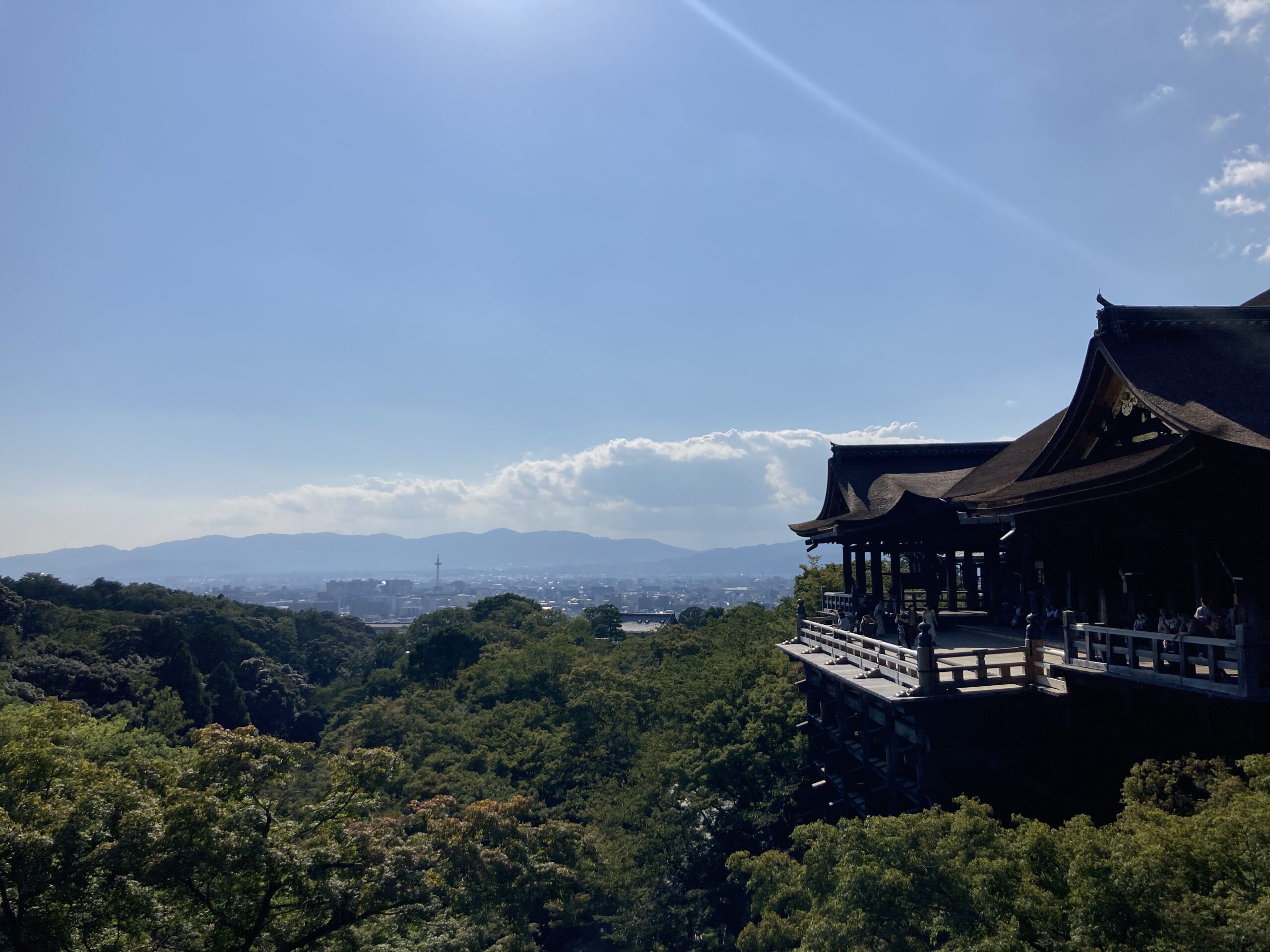Kiyomizu-dera Temple, perched gracefully on the slopes of Mt. Otowa in Kyoto, is one of Japan’s most iconic landmarks. Known for its wooden stage that offers a sweeping view of the city, this temple is not just a place of worship—it’s a living chronicle of faith, craftsmanship, and Japanese aesthetics.

- Founding Legends and Early History (8th–10th Centuries)
- Major Historical Milestones: Fires, Rebuilding, and Faith
- Architectural Features: The Marvel of the Kiyomizu Stage
- Religious Significance: Kannon and Pilgrimage
- Cultural Practices and Legends
- Modern Preservation and UNESCO Recognition
- Visiting Kiyomizu-dera: Tips and Highlights
- Conclusion: The Living Legacy of Kiyomizu-dera
Founding Legends and Early History (8th–10th Centuries)
The temple’s origins date back to 778 AD, when the monk Enchin (also known as Kenshin) discovered the Otowa Waterfall and enshrined the deity Kannon, the Goddess of Mercy. The name “Kiyomizu” means “pure water,” derived from this sacred spring.
In 798 AD, General Sakanoue no Tamuramaro constructed the main hall and offered it to the deity as an act of gratitude for victory in battle. This marked the temple’s transformation from a hermit’s sanctuary to an imperial place of worship.
Major Historical Milestones: Fires, Rebuilding, and Faith
Throughout its history, Kiyomizu-dera faced destruction from fires—especially during the Onin War (1467–1477). Each time, the temple was meticulously rebuilt, demonstrating the enduring devotion of the people. The current main hall was reconstructed in 1633 under the Tokugawa shogunate, using traditional joinery without a single nail.
Its stage, supported by 139 massive pillars, became a metaphor for bold action—giving rise to the Japanese phrase “to jump off the stage of Kiyomizu,” meaning to take a leap of faith.

Architectural Features: The Marvel of the Kiyomizu Stage
The main hall (Hondo) houses the eleven-faced Kannon statue and is built in the Butai-zukuri style, a terrace construction that extends over a cliff. The wooden stage, 13 meters above the hillside, allows worshippers to overlook Kyoto—a physical and spiritual elevation symbolizing the connection between heaven and earth.
Despite its age, the structure stands without nails, relying solely on precise carpentry and the elasticity of Japanese cypress wood.
Religious Significance: Kannon and Pilgrimage
Kiyomizu-dera belongs to the Hosso sect of Buddhism and is dedicated to the Bodhisattva Kannon, who embodies mercy and compassion. Pilgrims have visited the site for over a millennium to pray for healing, safe childbirth, and fortune in love. The nearby Jishu Shrine, dedicated to the deity Okuninushi, remains a popular spot for prayers related to relationships.
Cultural Practices and Legends
The Otowa Waterfall below the main hall is divided into three streams, representing longevity, success, and love. Visitors traditionally use a ladle to drink from one of the streams—drinking from all three is considered greedy!
Seasonal illumination events and temple markets keep the grounds lively throughout the year, connecting ancient tradition with modern culture.
Modern Preservation and UNESCO Recognition
In 1994, Kiyomizu-dera was designated as a UNESCO World Heritage Site under the “Historic Monuments of Ancient Kyoto.” Today, continuous preservation efforts balance the temple’s historical authenticity with the demands of millions of annual visitors. Recent restorations have renewed the temple’s vermilion hue, reminding us that cultural heritage, too, must be alive to endure.
Visiting Kiyomizu-dera: Tips and Highlights
- Best season: Spring (cherry blossoms) and Autumn (maple foliage)
- Access: 20-minute walk from Kiyomizu-Gojo Station (Keihan Line)
- Hours: 6:00 AM – 6:00 PM (subject to seasonal change)
- Admission: ¥400 for adults
Conclusion: The Living Legacy of Kiyomizu-dera
Kiyomizu-dera is not merely a temple frozen in history—it continues to evolve with the rhythms of Kyoto. Whether you come as a pilgrim, historian, or traveler, the pure waters of Otowa still flow beneath the same mountain, whispering the same promise of renewal.
Comments